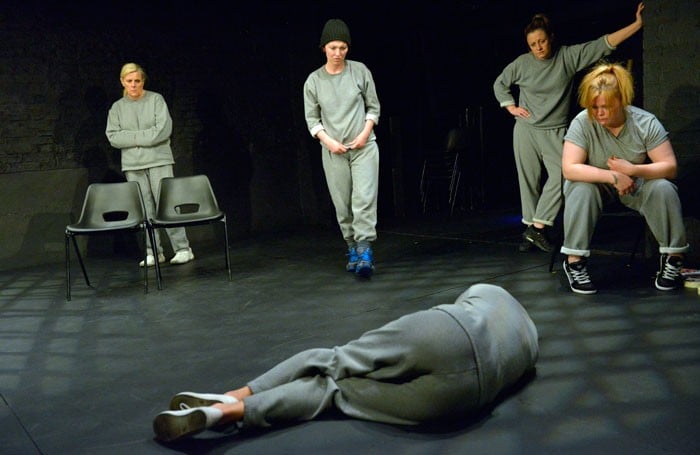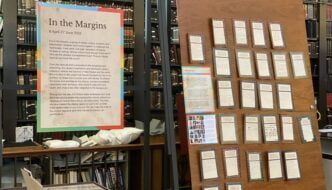
Made in collaboration with women in HMP Low Newton, theatre company Open Clasp’s production Key Change is, in a word, a triumph. Devised by the women during workshops held in prison, the piece collects together stories of life in and before incarceration, creating a work that shows how life experience affects life course; how prisoners aren’t simply criminals, but people whose start in life leads them to crime.
Originally performed by the women to their peers in HMP Low Newton, the piece has since been taken on by professional actors, who’ve played in male and female prisons across the UK, New York, and Connecticut, winning various accolades along the way (Carol Tambor Best of Edinburgh Award, New York Times’ Best Pick).
It lasts only an hour, has almost no set, and its five cast members are dressed entirely in grey, shapeless, prison sweats. Yet the content soars, and the stories of survival, neglect, abuse and sexual exploitation transcend the boundaries of those prison walls to reach us, stunned, in our audience seats.
One way in which the play achieves this is in its breaking down of the usual barriers that exist between audience and material. Carefully structured so as to allow the women to purposefully shift in and out of awareness of being watched, the audience are prevented from becoming complacent observers, from simply consuming narrative and reacting accordingly. The opening scene, for example, in which the women are queuing and fighting to use the prison telephones, dissolves into the women directly addressing the audience, explaining how the telephones work. Next, moving about the stage in neat choreography to represent a change of space, they are in the theatre workshop, discussing how best to represent the size of their cells with masking tape. Angie makes us laugh, by taking the task so seriously as to reprimand Kim for not coming through the masking tape door, but instead entering impossibly through one the walls. The togetherness of the women, and the chaos of the scenes as they fold in on one another feels like the natural result of living, eating, fighting, crying, breaking rules, opening letters and now acting all together.
And these shifts, of which the women know everything and we can only follow, mean that when they come to reenact sensitive scenes from their pasts—the moment Lucy’s partner threw her to the floor, kicked her, and spat; when Angie, assaulted by her father, first turned to heroin—we feel that they have complete ownership over our experience of their stories, for they are choosing to tell them and to help each other act them out.
Now, towards the end of the hour, the telephone scene plays out again exactly as it had before. In the sparseness of the set, a few chairs and a desk, we are not given much with which to imagine life in prison. Yet now, through the experiences that have been shared and the development of each character, the scene is rich and powerful with new meaning. These are not just women in prison, they are women with real histories, each with her own path that led her to where she is today.
At the end of the performance, the audience gave a standing ovation as the actors bowed, and there was a sense that this was not so much for the actors and makers as for the women of the HMP Low Newton who inspired them. This is a real achievement, for through brilliant writing, directing and acting, the play seems capable of sharing these women’s real human experience, allowing them to speak beyond their barriers to ignite empathy worldwide.
Filed under: Theatre & Dance
Tagged with: Contact Theatre, crime, domestic abuse, drugs, Key Change, manchester, Open Clasp Theatre Company, prisoners, women


Comments